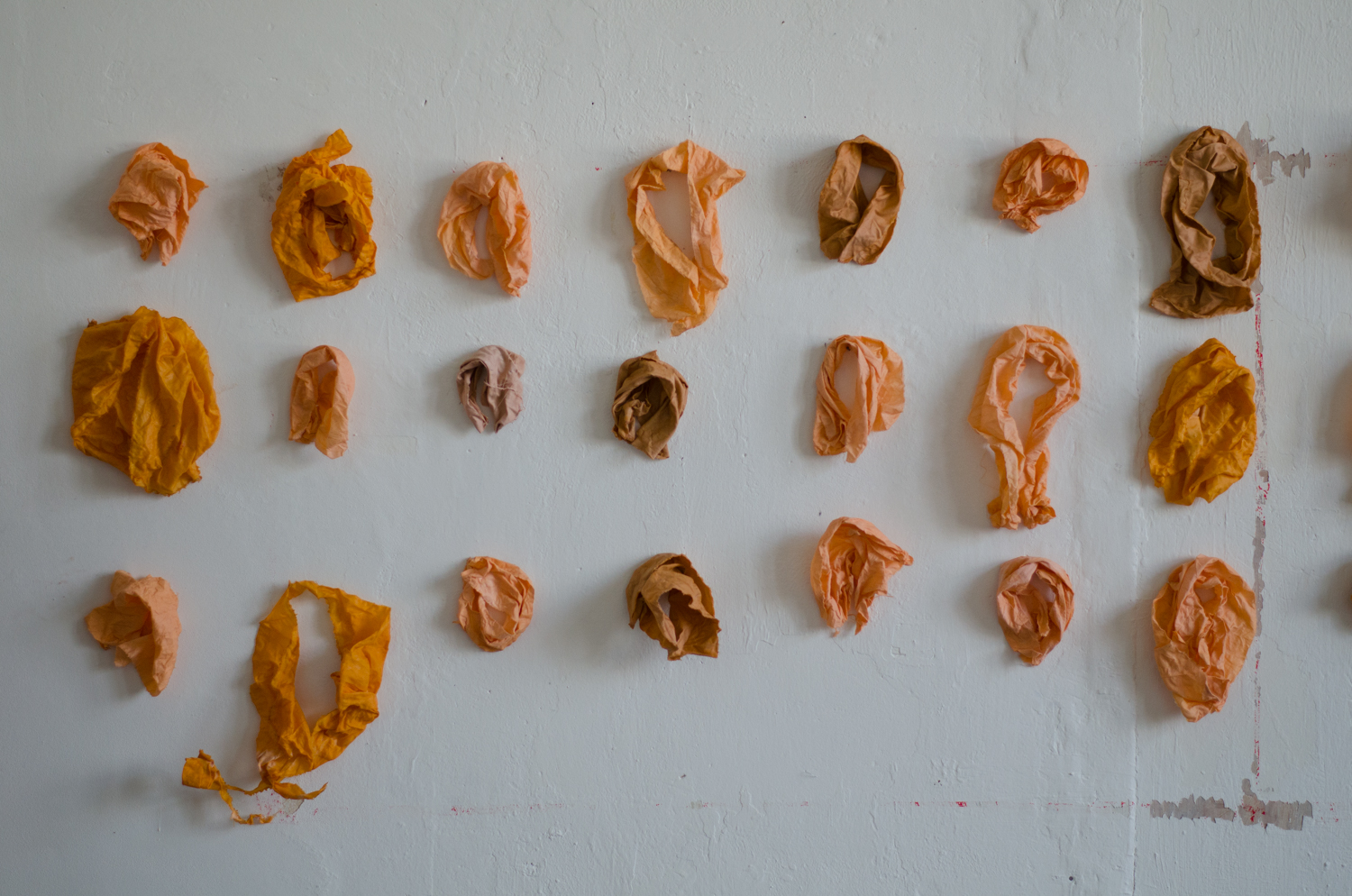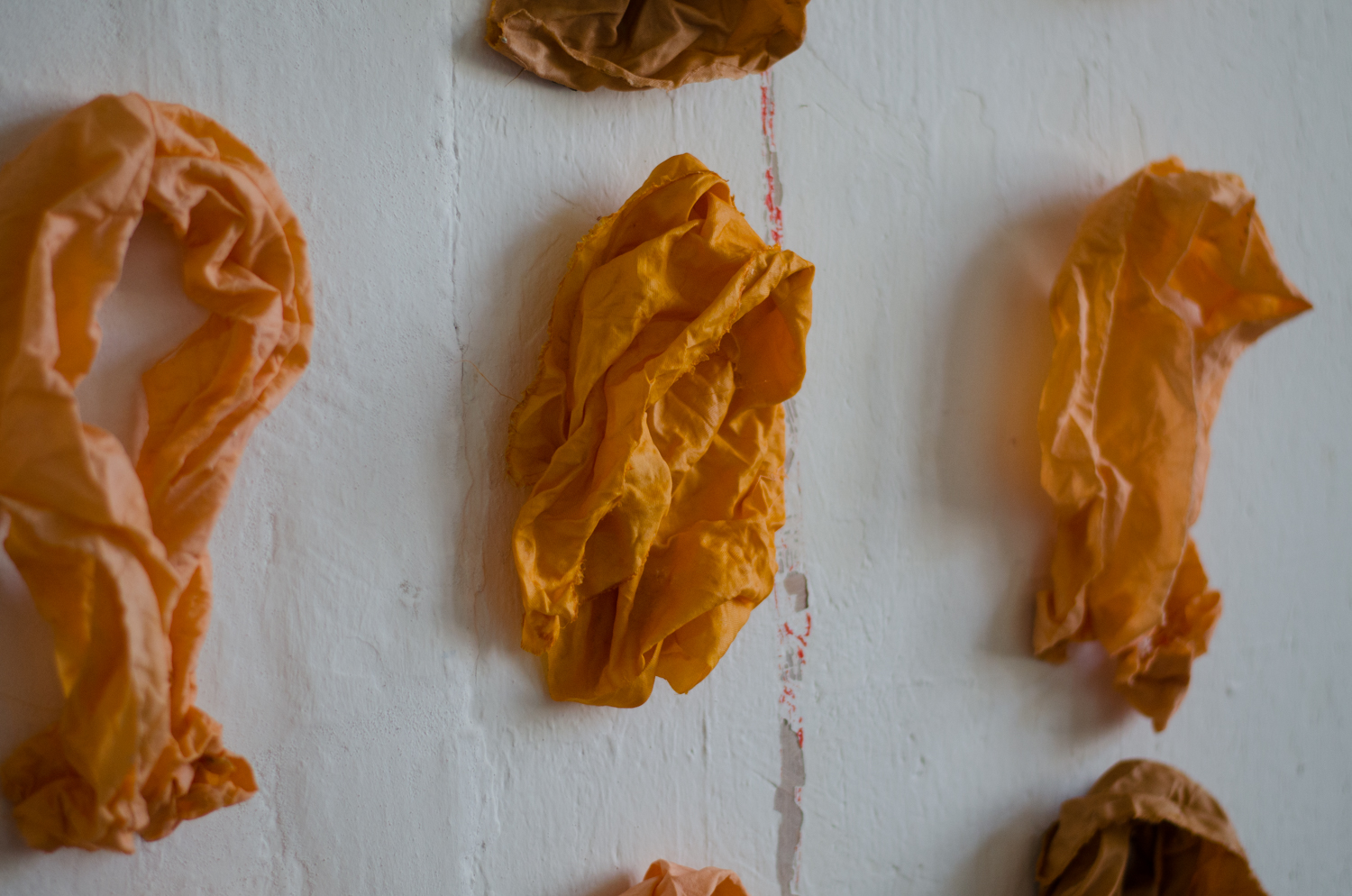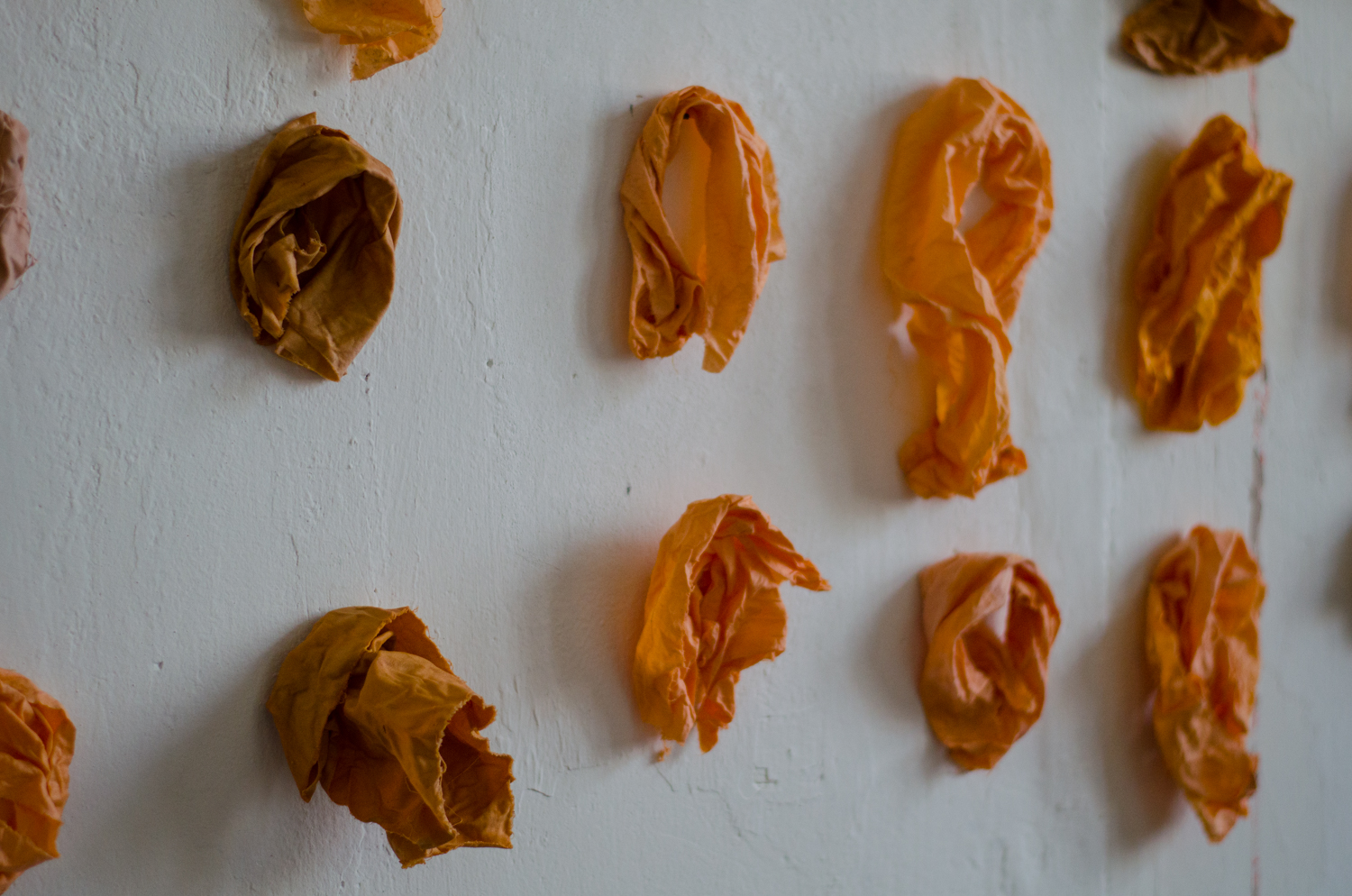
An Accumulation of Gestures





An Accumulation of Gestures (2019)
Sculpture series. Dimensions variable.
Urucum-dyed fabric, bioplastic.
This project, still a work in progress, critically examines my own relationship with contraceptive prosthetic technologies. In 2015, whilst researching and writing about the colonial history of the birth control pill for my PhD dissertation, I had to confront the fact that I had been taking this very medication since I was 16 years old. As an adult, my relationship with my own body was mediated by this anti-fertility prosthetic; I did not know myself without it. My decision to start taking the pill had been heavily influenced by the fact that abortion was — and continues to be — illegal in Brazil; an accidental pregnancy was not something over which I would have any kind of choice. In spring 2015, as a 30 year old living in Germany and emboldened by the country’s more permissive abortion laws, I finally felt able to stop taking the pill.
From the abandonment of one anti-fertility prosthetic came, however, a dependency on another kind of technology: menstrual tracking app Clue. On the day I stopped taking the pill, I started documenting my body’s cycles and responses with this app. It would take three years before I felt that my body had truly come into its own, and that the effects of 14 years on the pill were finally gone. In spring 2018, three years after I first started tracking my cycles with the app, I downloaded all of the data accumulated in this period. I had a total of 382 days of entries, documenting everything from my menstrual cycle, to sleeping, partying, and eating habits, to my sexual life. I was struck by the ritualistic nature of this documentation, where I would repeatedly use a set of five different gestures on my phone screen to enter this data.
For this work, I dyed different types of silk and cotton fabrics with urucum seeds — also known as annatto or achiote, — a condiment and food dye traditionally used in Brazilian and other Latin American cuisines. Ground seeds are used for body paint by many indigenous Brazilian groups, and tradition says that the plant is an aphrodisiac. The fabrics were then divided into smaller pieces, dipped in bioplastics, and shaped by using the gestures I had used to enter data on a given day. This work is currently comprised of 100 small sculptures, but will be expanded into 382 items.
Installation photo 1 by Tomáš Souček.